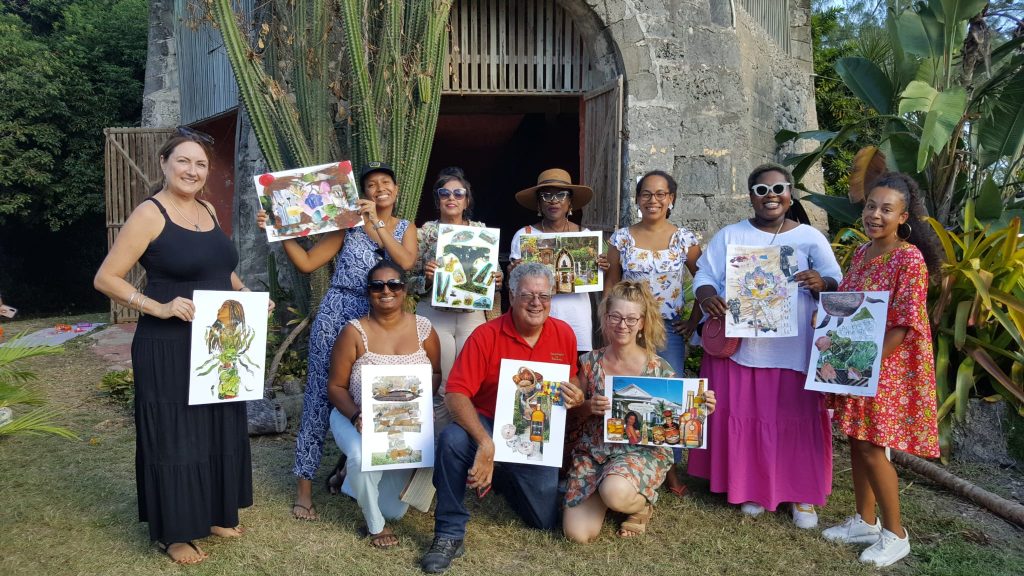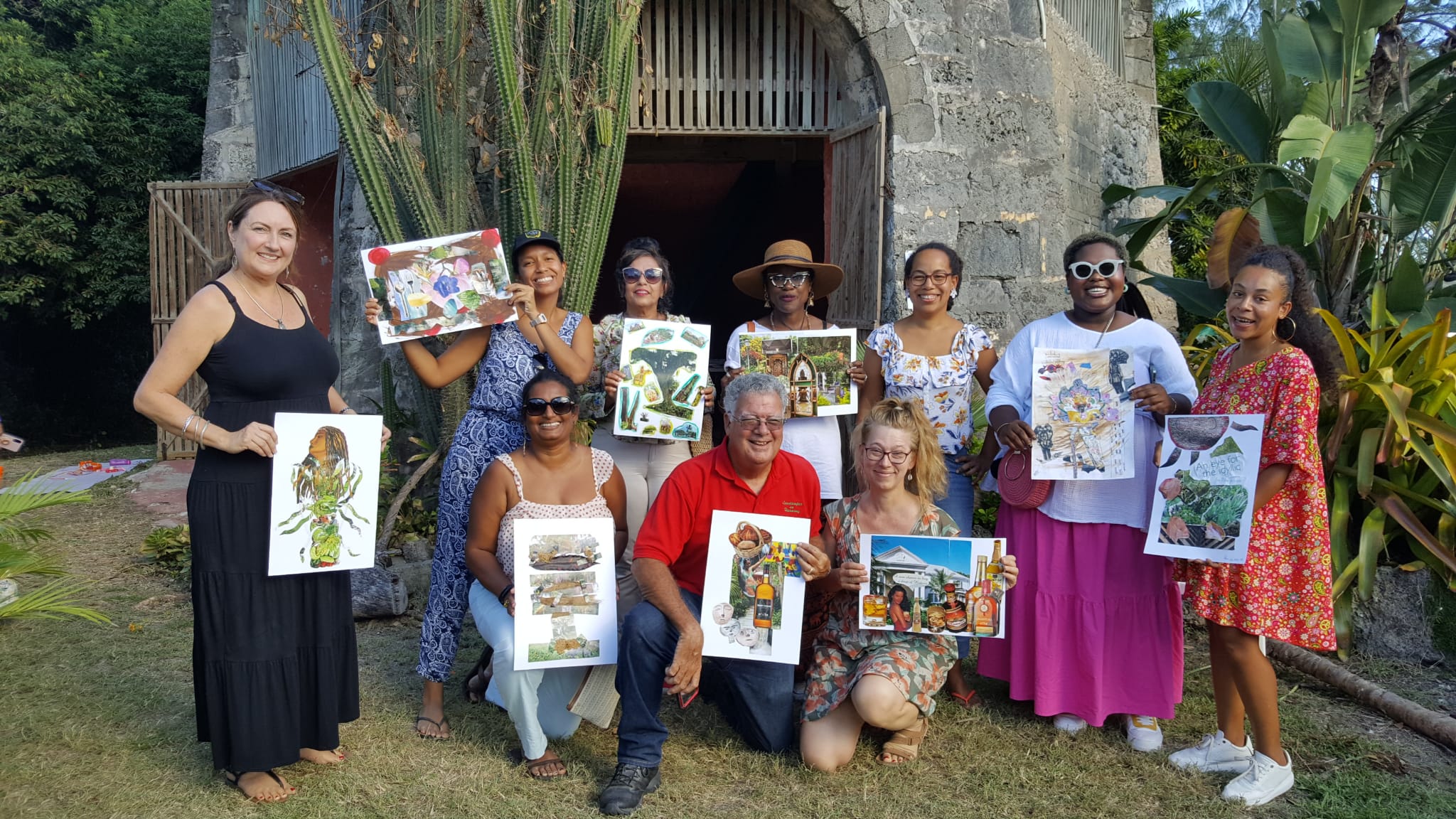On Sunday 29th January 2023, Botanical Encounters initiated a botanical art workshop in Balls, Barbados. Designed by Simbah Pilé, a Barbadian artist who now lives in Bath, UK, the workshop explored how plants introduced by colonisation have shaped people’s identities and imagination. Simbah’s own roots, however, are not the sole connection between Bath and Barbados. Today headquater of the Barbados Horticultural Society, Balls was once a sugar plantation of about four hundred acres and belonged to the Ball family. Guy Ball (c.1686–after 1722) had taken ownership of it in the 1720s. In 1732, his daughter Frances married Edwin Lascelles, a plantation owner and Collector of Customs in Barbados whose family was involved in sugar production, money-lending to slave-traders as well as pro-slavery campaigning in the British parliament. By 1787, the Lascelles held more than 27,000 acres in the Caribbean and owned almost 3,000 enslaved people.
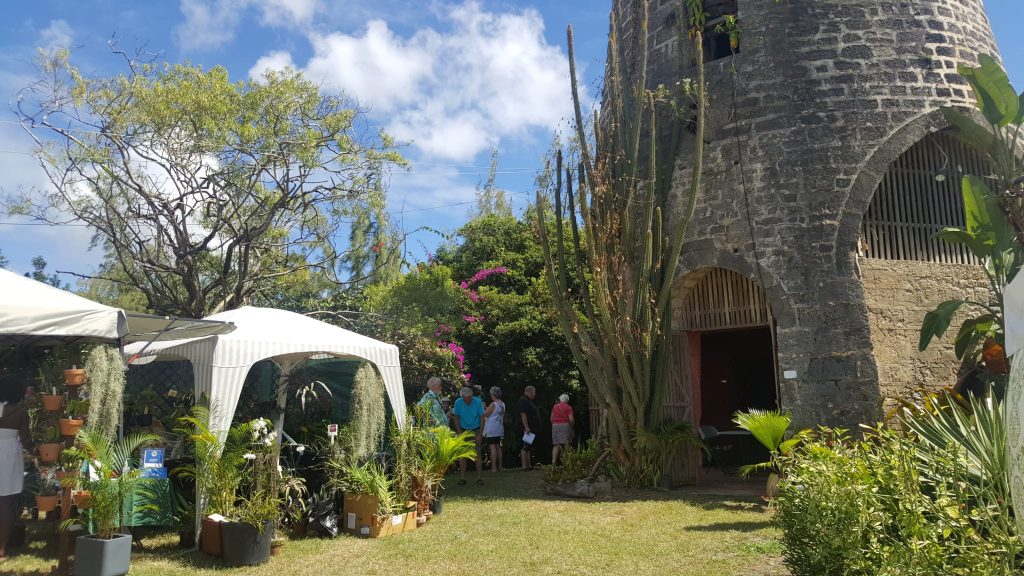
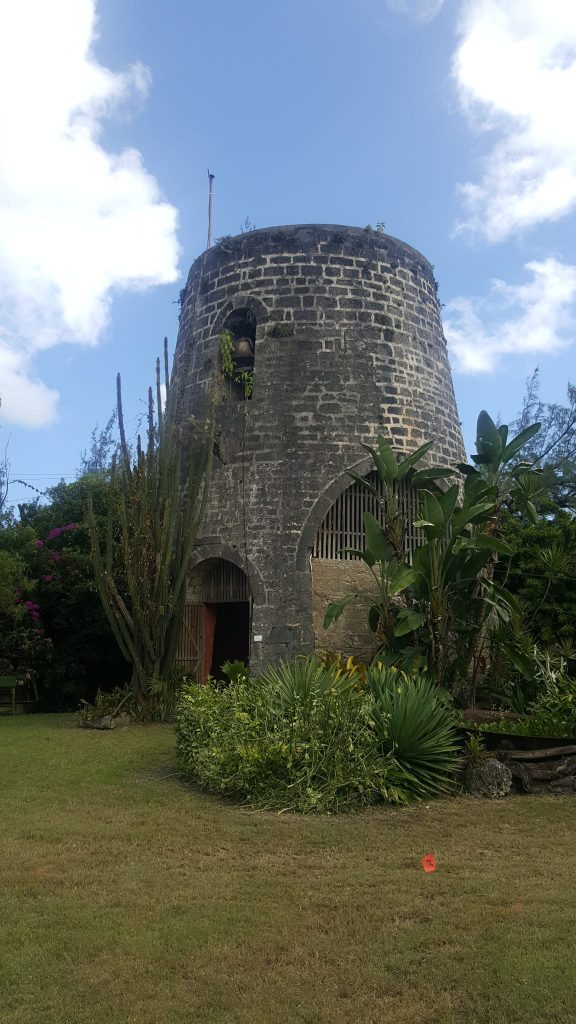
Following her first husband’s death in 1747, Frances Ball married Admiral Sir Francis Holburne who served as a Commander-in-Chief of the ‘Barbados and Leeward Islands’ Station of the British Navy. The Bath-based art collector Sir William Holburne was their grand-son. His collection of seventeenth- and eighteenth-century silver, porcelain, bronzes, old master paintings and inherited family treasures are now on display in Bath’s Holburne Museum, named after him. Recently, the Holburne museum issued a statement acknowledging the links between the collection and histories of empire and slavery. They also committed to further exploring these connections, starting with the reinterpretation of a Plantation Day book from 1722 which is part of the permanent exhibition.
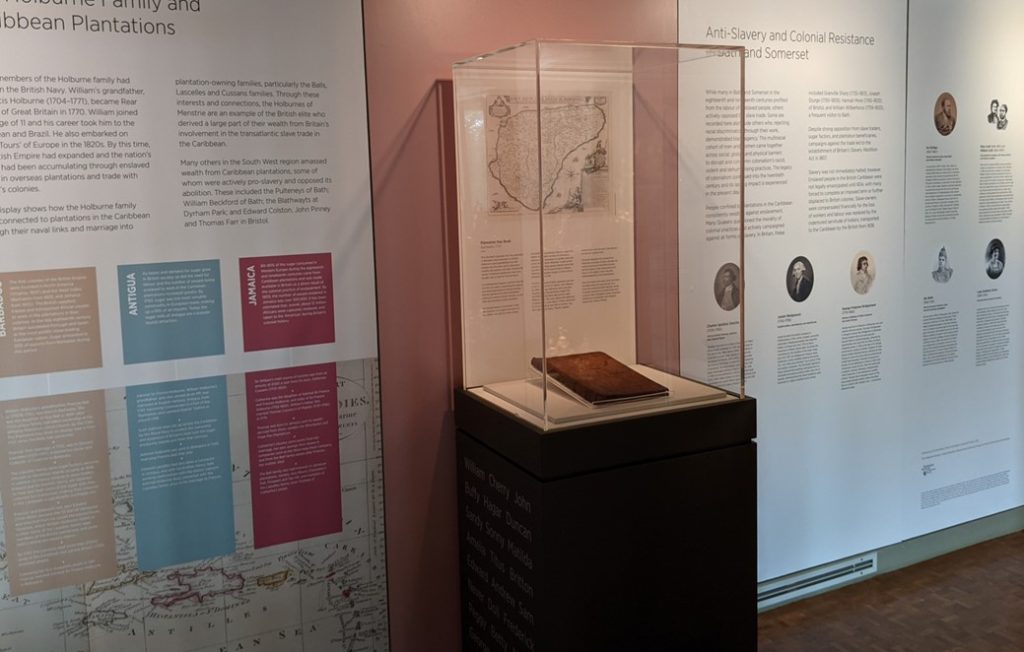
Today, the old Boiling House of the Ball Plantation belongs to the Barbados Horticultural Society, formed in 1927. Each year on the last weekend of January, the Society holds its Annual Flower and Garden Show which is the biggest fundraiser for the Society. It was during this floral exhibit that our workshop took place in the plantation’s old mill, erected in 1866.
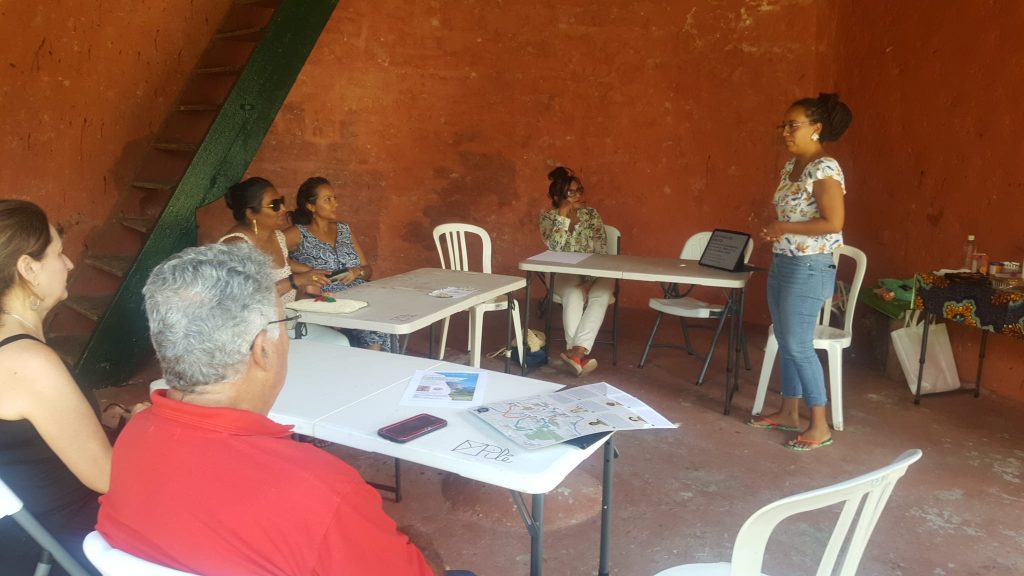
The mix-media workshop which used painting, drawing and collage, started with Simbah introducing the aims: questioning the links between plants, the colonial past and present-day identities. Adapted to the Bajan context, the workshop looked at plants introduced in Barbados by the colonisers such as mango, tamarind, breadfruit, croton, bananas, or bougainvillea, as well as plant motives used in architecture and fine and decorative arts.
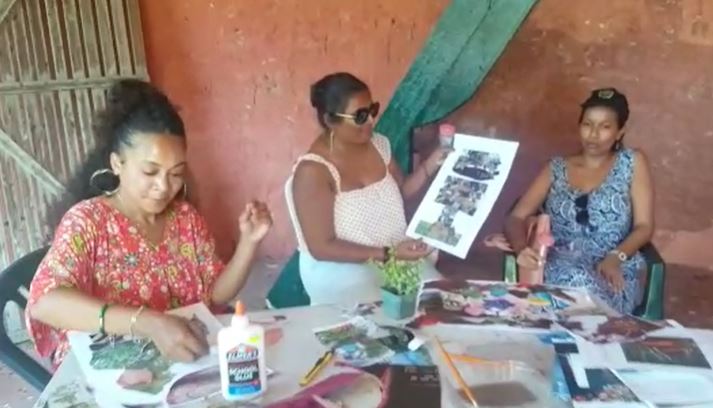

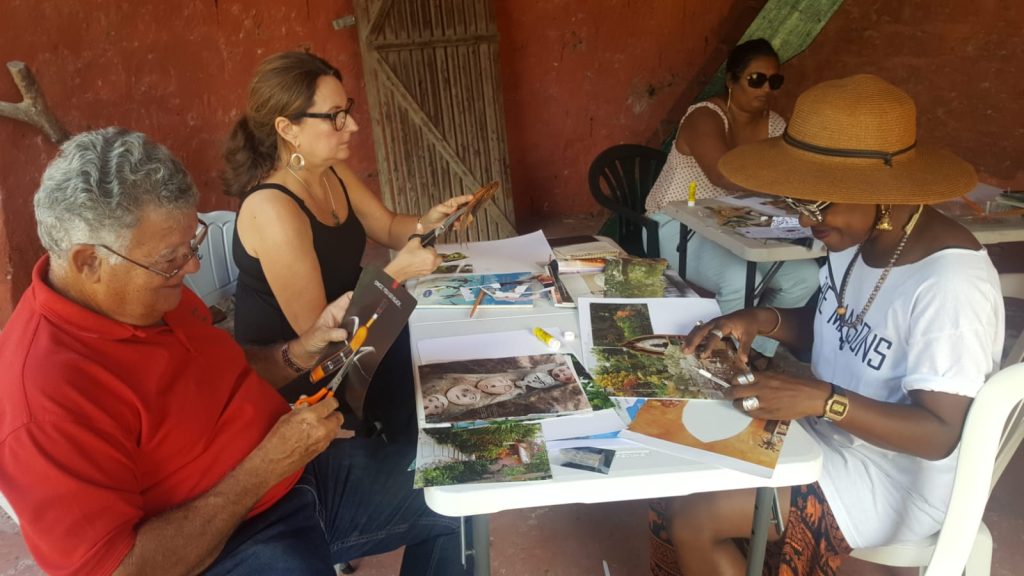
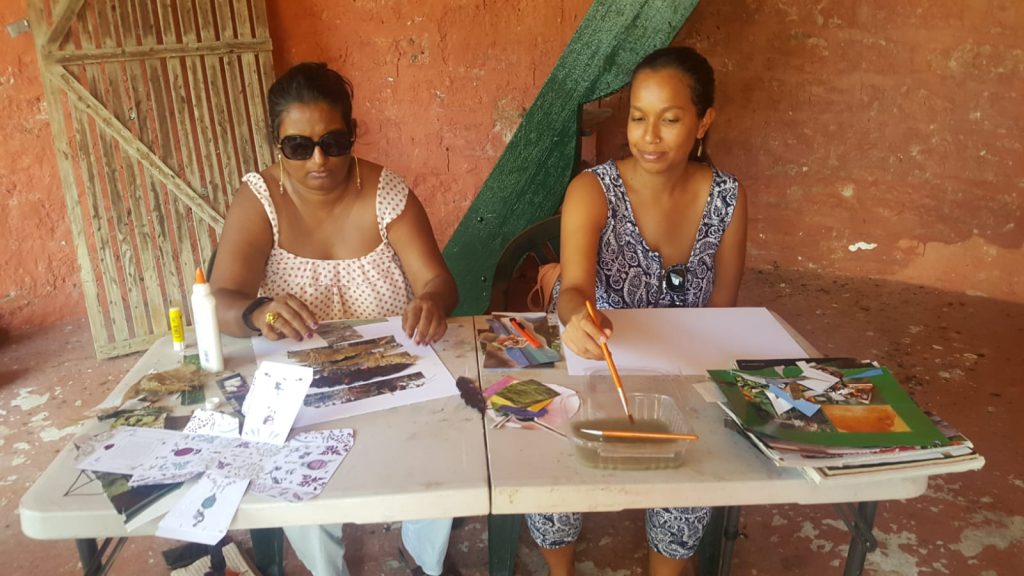
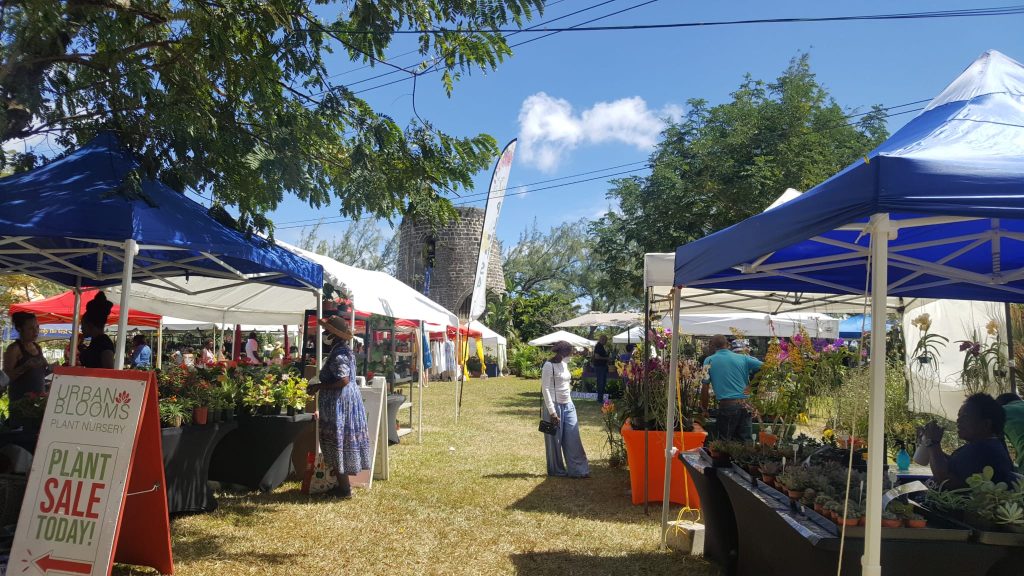
The participants took inspiration from the beautiful plants exhibited around them as well as contemporary artists including Simbah and Hew Locke to disentangle some of the colonial roots of plants of some familiar plants. The workshop ended with them commenting on their collages, applauding each other and taking a group picture posing proudly with their works.
